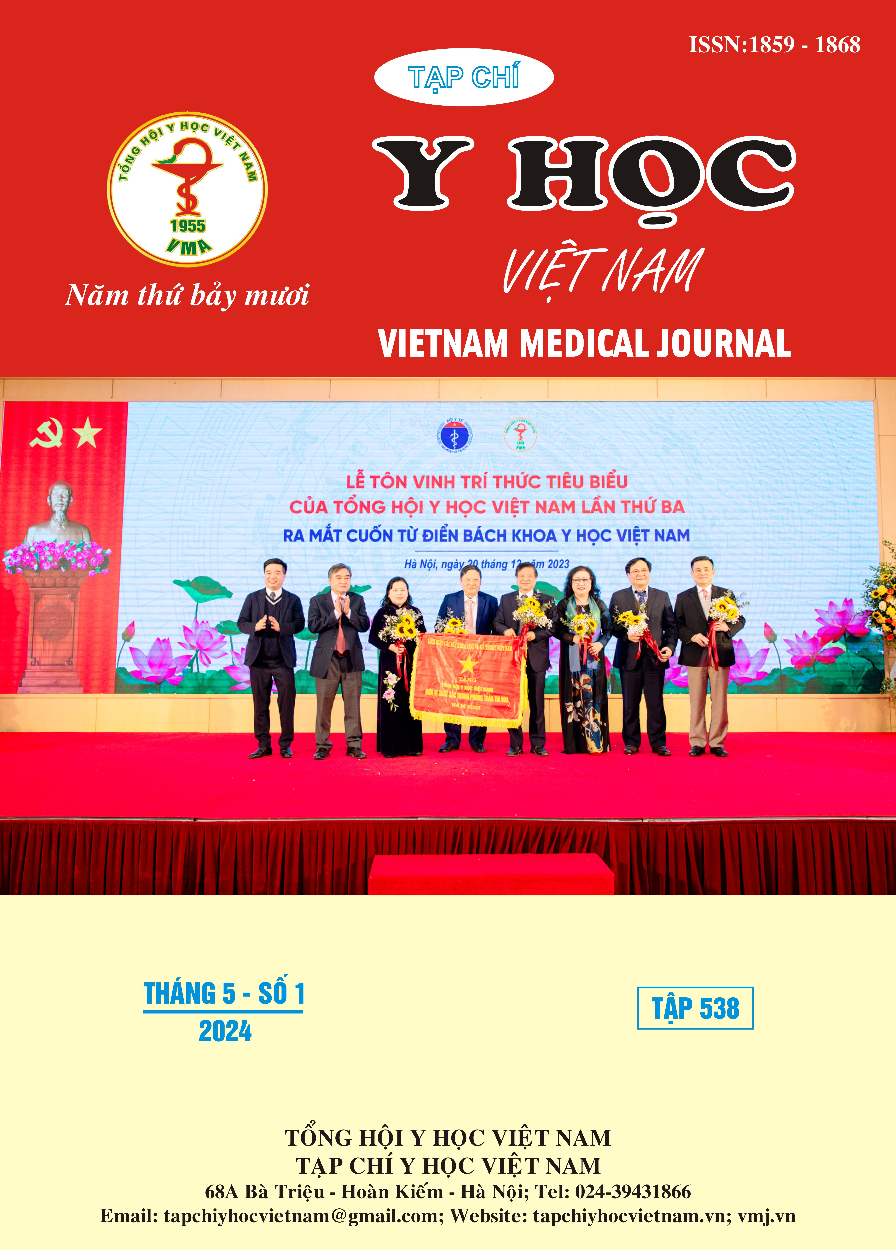CONSEQUENCES AND RELATED FACTORS OF EXOGENOUS CUSHING’S SYNDROME IN CHILDREN
Main Article Content
Abstract
Exogenous Cushing's syndrome is a multisystem disorder caused by long-term use of glucocorticoids. If not detected early, it causes a lot of serious consequences both physically and psychologically for the child. Objective: Describe the consequences and related factors of exogenous Cushing's syndrome in children. Subjects: 194 children with exogenous Cushing's syndrome were diagnosed at Vietnam National Children's Hospital from February 2022 to February 2023. Methods: Description of case series, retrospective and prospective. Results: The male: female ratio was 57.7:42.3 with the median age of diagnosis being 4.5 years old, the youngest being 3 months old and the oldest being 18.2 years old. The median duration of glucocorticoids use was 4 months, with children using the drug for the longest duration up to 12 years. Up to 20.2% of children with height being ≤ -2 SD (WHO) and 66.9% of them were overweight and obese. 82.9% of children had adrenal insufficiency; 36% of them had insulin resistance; 56.4% of children had hyperlipidemia; 12.8% of them had hypocalcemia and 23% of them had vitamin D deficiency. Conclusions: Exogenous Cushing's syndrome in children causes severe metabolic consequences such as insulin resistance, hyperlipidemia, calcium and vitamin D deficiency, delayed physical development with short status but increased BMI. Recommendation: Medical staff need to prescribe glucocorticoids appropriately to avoid the consequences of exogenous Cushing's syndrome in children. On the other hand, it is necessary to recognize early signs of exogenous Cushing's syndrome to make appropriate adjustments in treatment as well as prevent possible complications
Article Details
Keywords
Exogenous Cushing's syndrome, glucocorticoids, children.
References
2. Chaudhry H.S & Singh G. Cushing Syndrome. [Updated 2023 Jan 1]. In: StatPearls [Internet]. Treasure Island (FL): StatPearls Publishing; 2023 Jan. Available from: https://www.ncbi.nlm.nih. gov/books/NBK470218/
3. Ahmed S.M, Ahmed S.F, Othman S, et al. Topical corticosteroid-induced iatrogenic cushing syndrome in an infant; a case report with literature review. Annals of Medicine and Surgery, 2021, 71: 102978. https://doi.org/10.1016/ j.amsu.2021.102978
4. Doctor's articles | Published on: Jan 21, 2015 | Doctor's Articles, Medication Induced Cushing's. https://csrf.net/doctors-articles/med-induced-cushings/medication-induced-cushings/
5. Patt H, Bangdgar T, Lila A, et al. Management issues with exogenous steroid therapy. Indian J Endocrinol Metab,203 Dec, 17(3): S612-S617. doi: 10.4103/2230-8210.123548
6. Savas M, Mehta S, Agrawal N, et al. Approach to the Patient: Diagnosis of Cushing Syndrome. The Journal of Clinical Endocrinology & Metabolism. 2022 Nov, 107(11): 3162–3174. https://doi.org/10.1210/clinem/dgac492
7. Caniggia A, Nuti R, Lore F, et al. Pathophysiology of the adverse effects of glucoactive corticosteroids on calcium metabolism in man. Journal of Steroid Biochemistry, 1981 Dec, 15: 153-161. https://doi.org/10.1016/0022-4731(81)90270-3
8. Hopkins R.L & Leinung M.C. Exogenous Cushing’s Syndrome and Glucocorticoid Withdrawal. Endocrinol Metab Clin N Am, 2005, 34: 371-384.


